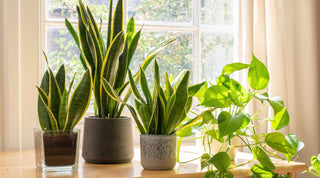Creating the ideal garden soil mix for your garden beds is a key step in ensuring the health and success of your plants.
Whether you're an experienced green thumb or a budding gardener, understanding how to blend the perfect garden soil mixture can significantly impact your gardening journey. This guide will walk you through the process step by step.
Assessing Your Current Soil
Before adding anything, it's essential to understand your starting point. Most garden centers sell soil testing kits that can reveal your soil's pH level and nutrient content. Ideal garden soil should be rich in nutrients, well-draining, and have a pH around 6.5, which is slightly acidic.
Components of an Ideal Soil Mix
The best garden soil mix should include the following components:
-
Compost: Compost adds essential organic matter, improving soil structure and providing nutrients. You can buy bagged compost or make your own.
-
Peat Moss or Coconut Coir: These materials help retain moisture. Peat moss is more acidic, so if your soil is already acidic, opt for neutral pH coconut coir.
-
Perlite or Vermiculite: These minerals improve aeration and drainage. Perlite is best for plants that need well-draining soil, while vermiculite retains more moisture.
- Sand: Coarse sand improves drainage, particularly beneficial for heavy, clay-rich soils.
Step-by-Step Guide to Creating Your Soil Mix
-
Measure Your Beds: Know the volume of your garden beds to determine the amount of each component needed.
-
Base Soil Layer: Start with your existing garden soil or purchase a high-quality topsoil as your base layer.
-
Add Compost: Mix in compost at a ratio of 1:3 (compost to soil). This will enrich your soil with organic matter.
-
Incorporate Peat Moss or Coconut Coir: Add these materials at a 1:3 ratio to your mixture. They will help with moisture retention.
-
Add Perlite or Vermiculite: These should make up about 10-20% of your total soil mix, depending on your drainage needs.
-
Mix in Sand: If your soil is heavy and clay-like, add coarse sand to improve drainage. Use a ratio of 1:4 (sand to soil).
-
Thoroughly Mix: Use a shovel or a garden fork to mix all components evenly. Ensure a uniform mixture without clumps.
- Final pH Check and Adjustment: Test the pH of your final mix. If it's too acidic, you can add garden lime to increase the pH. If it's too alkaline, sulfur can help lower the pH.
Mulching and Ongoing Maintenance
After planting, add a layer of mulch on top to help retain moisture and suppress weeds. Regularly check your soil's condition and amend as necessary. Seasonal additions of compost or other organic matter can keep your soil healthy year after year.
Conclusion
A perfect garden starts from the ground up. By creating a tailored garden soil mix, you provide your plants with a robust foundation for growth and vitality. This guide should help you craft a soil mixture that caters to the unique needs of your garden, ensuring a lush and thriving landscape.



